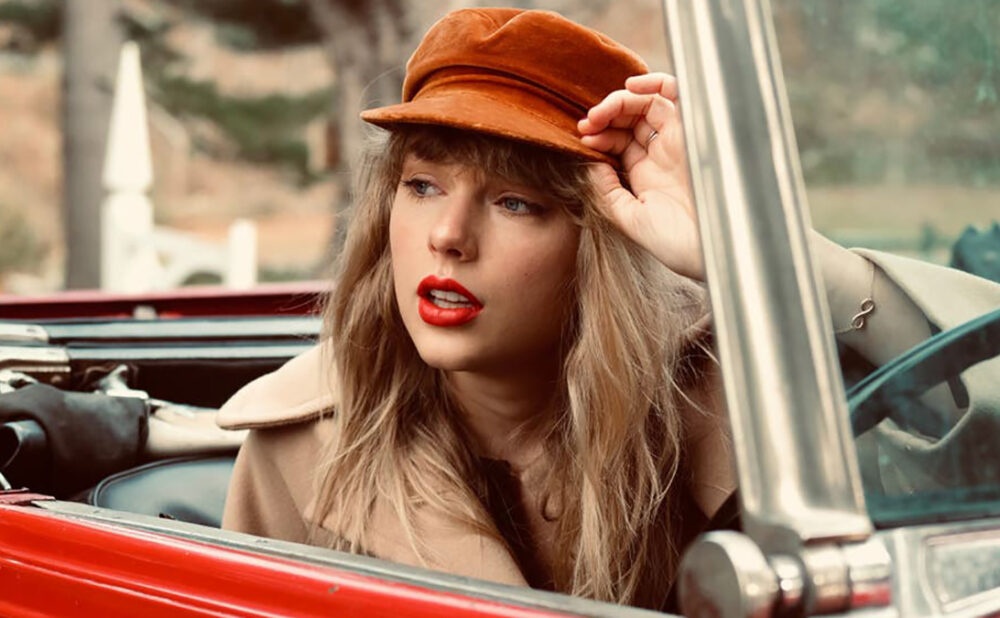Why Didn’t We Think She Was Too Young?
In her new short film and expanded album, Taylor Swift points the finger at her audience.

When Taylor Swift recounted her ill-fated relationship with John Mayer on 2010 track Dear John, she repeated the same question again and again with pleading sincerity: “Don’t you think I was too young?”
She was 19 when she dated Mayer, who was 32 at the time. He, by all accounts, treated her terribly, which isn’t out of character — he has a long and storied history of being the fucking worst to pretty much everyone. But despite his proclivity for racial slurs and speaking his mind when it came to women’s bodies, he’s always stayed conspicuously quiet when prodded about the age gap in his relationship with the teenage Swift. Outside of a few songs, she’s avoided speaking explicitly on her several age-imbalanced relationships, too — for most of her career, the media frenzy around her relationships barely let her get a word in at all.
But Swift is on an empowerment kick: This week, she released Red (Taylor’s Version) as part of her ongoing plan to re-record and re-imagine the albums she made while under predatory contract. There’s no mention of Mayer on this album — by the time Red was released in 2012, the main man in her life was 30-year-old Jake Gyllenhaal. Much of the original album was dedicated to their disastrous three-month love affair, but it’s only in the re-release that she explores the consequences of their nine-year age gap. The crown jewel of the album, in fact, is an expanded 10-minute version of her cult-classic sleeper hit All Too Well, drawn from the original verses she penned when writing the song for the first time.
It’s in this track where it becomes clear that the themes she first wrote about in Dear John didn’t leave when he did. “You said if we were closer in age maybe it would have been fine, and that made me want to die,” she writes, followed by: “I was never good at telling jokes, but the punchline goes: I’ll get older, but your lovers stay my age.”
(This 10-year-old barb is as accurate as it was biting: 40-year-old Gyllenhaal started dating his current girlfriend when she was 21. In the most please-don’t-sue-me way possible, I hope he chokes!)
On Friday, she released a debut short film to accompany All Too Well (Ten-Minute Version) starring Stranger Things star Sadie Sink and 2000s-indie-boy Dylan O’Brien. Those casting choices are meticulous, razor-sharp and pointed — they tell a story as effectively as the song itself. Sink is best known for playing honest-to-God children, and most people actually think of her as much younger than she actually is (there was a brief online outcry after the short film’s release from people who were convinced she was still a legal minor).
On the other hand, O’Brien’s age is made all the more apparent by the fact that he was at his peak almost a decade ago, playing teenage characters in Teen Wolf and Maze Runner. When the casting was announced, I was confused — I wondered if they were somehow playing siblings, or maybe a teacher and student? — but their 11-year age gap is only two years wider than Swift and Gyllenhaal’s, and Sink is only a year younger than Swift was at the time. The difference is that, unlike Swift throughout her most difficult years, Sink is perceived by us as the teenager that she is.
Swift, who wrote and directed the film, throws this injustice in our face. Physicality between the actors is constant, bordering on excessive: The first time they touch, I physically flinch as hard as if I was watching a slasher flick. A 20-second makeout shot feels so viscerally wrong that I have to close my eyes. I don’t exaggerate when I say that their on-screen relationship is genuinely gut-churning to watch: Rosy-cheeked, messy-haired Sink is so obviously a child, O’Brien so clearly a man. It feels — in some ways accurately — like we are watching a crime unfold before our eyes.
When they argue (with writing so sharp and realistic that it seems as though Swift must have pulled it directly from a decade-old diary), the glaring age gap makes it seem ridiculous: “She’s a child!” you think! “She is so obviously a child!”

The irony here, of course, is that the world saved its righteous anger until 10 years too late. When Swift was a young girl suddenly thrust into the biggest spotlight in the world, nobody passed judgment on the revolving door of men twice her age who lined up to claim her like a trophy. Instead, she was a slut, a serial dater, a crazy bitch — and when her dating life was the butt of a universal cultural joke, nobody even considered that she could be a victim. Instead, blonde, icy-eyed Swift (ripe for the projection from insecure men and girls who were unpopular in high school) was made out to be the Jezebelian villain everyone wanted her to be.
According to the tabloids, men lived in fear of her scathing, lust-crazed pen; she was cruel, insane, heartless! “Won’t anyone think of John Mayer???” wept the masses!
Swift — tall, thin and strikingly gorgeous — was a perfectly cast evil queen for the tabloid circus. It’s important to note, though, that even as the media’s sexism attacked her from all sides, her saving grace was always her whiteness (notably, many outlets mysteriously rushed to her defence once she was pitted against Kanye West instead of a white man). Along the axis of race, she was a perpetual victim; in her romantic relationships, she was conniving, hysterical and manipulative. Even as she was pursued by some of the most powerful men in Hollywood, she was somehow always painted as the aggressor instead (as if the occasional petty country song was a comparable weapon to the systems of patriarchy and rape culture).
In recent years, countless people have changed their minds on Swift; one of the surprising benefits of her re-release project is that people who wrote her off during the early 2010s are suddenly realizing that her music was always pretty great. Projects like Red, though, do more than re-introduce her music to the world: they also force her perspective on the relationships of her youth back into the public eye.
As she’s gradually gained control of her narrative, we’ve spent the last few years witnessing the Taylor Swift Redemption Arc — but like redemption arcs of its ilk, there is no true catharsis in realizing that we spent years cannibalizing a young woman to feed our insatiable cultural appetite.
Unlike Britney or Alanis, however, Swift is choosing to artistically hold her audience accountable for some of what it did before her redemption began. Through All Too Well: The Short Film, she points the finger at us: she lays the truth out on the table, waving it in front of our faces, wondering why we didn’t see it sooner.
With every stomach-churning scene between her fictionalized self and the older man wearing her down, Swift is forcing her audience to realize now what they never could while these relationships were actually happening. With fire and fury, with palpable rage, she repeats the question she first asked over a decade ago: “Don’t you think I was too young?”





